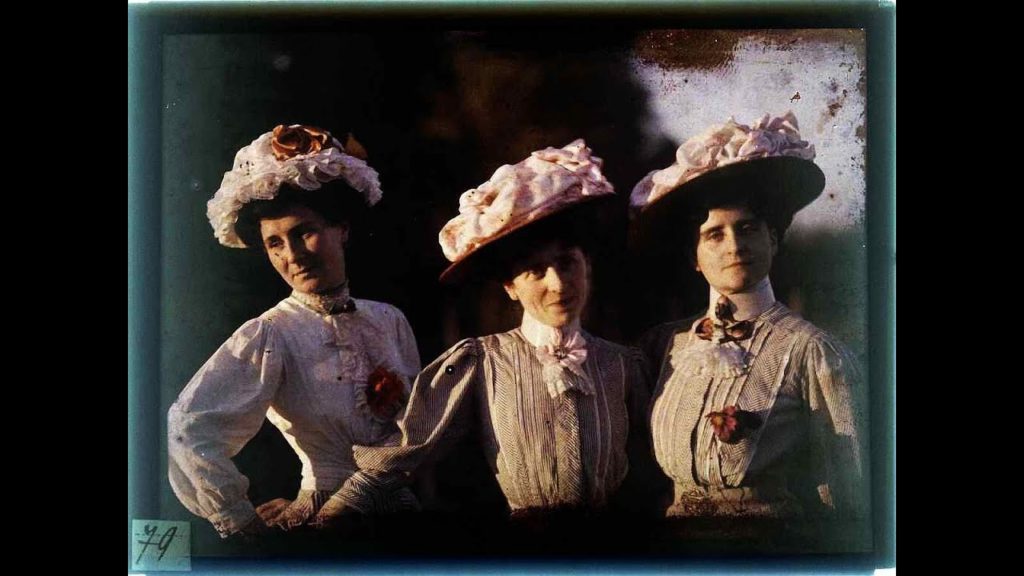In 1907, the Lumière brothers, Auguste and Louis, introduced the first viable method of color photography. Although color photographs had existed, the process was clumsy and complicated. The key ingredient, the Lumières discovered, was potato starch.
The process, called auto chrome, involved covering a glass plate with a thin wash of tiny potato starch grains dyed red, green, and blue, thus creating a filter. A thin layer of emulsion was added over that. When the plate was flipped and exposed to light, the resulting image could be developed into a transparency.
One of the most delicate, in all aspects of the word, photographical techniques is the Autochrome. These early 20th. Century colour photographs, invented by the Lumière brothers, (Auguste and Louis) show images with a ‘pointillistic’ effect. The Lumière’s contribution to colour photography is perhaps of more importance in comparison to their contribution in film history, since in the period (1895) they “invented” cinema, projected moving images where since long in existence!
Autochromes were not the first photographs in colour since the search for colour started at the dawn of photography and is seen in most early techniques true colouring by hand. E.g. Daguerreotypes, Ambrotypes, Chrystoleums, etc. However, the autochrome was the first practical technique that produced colour without the artificial aid of an artist.



